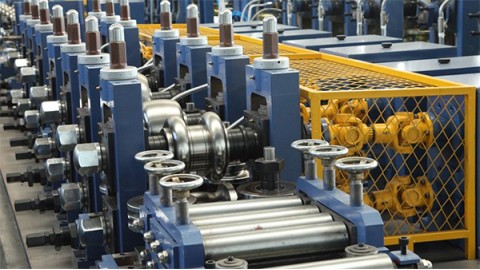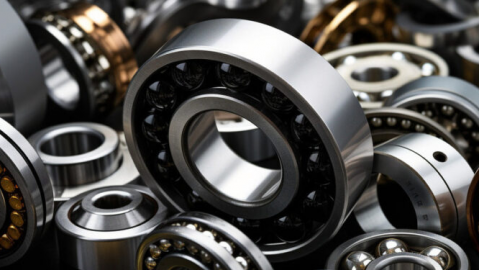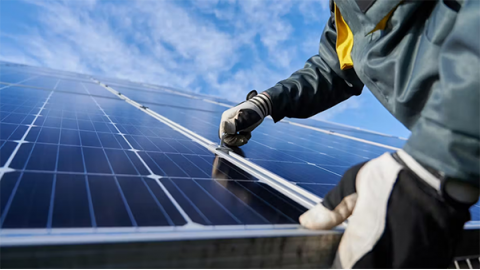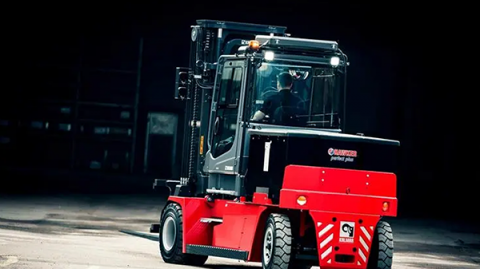When importing products from China, it is important to understand import duties, customs fees and clearance documents. As an importer, Chinese manufacturing is a good choice for many products that can be sold locally or online and reap huge profits. Tariffs depend on the products and commodities you import from China to the United States, which makes the entire international trade process for new importers seem complicated. This article will help you understand the tariffs on goods imported from China to the United States and how to check each product tariff. Let us delve into the import tax from China to the United States.
As a new importer, you must be aware that US Customs imposes tariffs on all imported goods valued at $800 or more. Values below $800 are tax-free. However, since June 30, 2018, the United States has increased the tariff on China’s 50 billion goods by 25%, which has increased the cost of American consumers.
This article will let you learn more about import tariffs and customs clearance issues.
When did the tax exemption for imported goods from the United States, increase from $200 to $800?
Since February 24, 2016, former U.S. President Barack Obama signed the Trade Facilitation and Trade Enforcement Act of 2015, which will increase import tax exemption from 200 U.S. dollars to 800 U.S. dollars, The act was implemented by the United States Customs and Border Protection Agency on March 10, 2016. The amount of tax exemption means that the goods that meet the conditions are less than the stated dollar amount of USD 800, and can be exempted from making customs declaration without paying customs duties or taxes. This means that most goods shipments of less than 800 U.S. dollars will be exempt from customs clearance and import duties.
This move not only motivated the US consumers but also inspired a lot of e-commerce sellers to consider shipping with express delivery. However, the exemption rules are conditional and exceptional, and under the United States Customs regulations (U.s.customs regulation 19cfr10.151), the goods subject to this exemption need to meet the following requirements:
(1) The goods must be imported by the same person on the same day.
(2) Consolidated goods delivered to the same final consignee will be treated as one-ticket imported goods (ie, the same person importing several goods on the same day plus a total of more than $800 is not tax-deductible)
(3)Alcoholic beverages, alcohol-containing perfumes (unless the total fair retail value of the country of shipment of all goods does not exceed $5), cigars or cigarettes cannot be exempt from taxation.
If the Customs considers that the goods are one of several batches under a single order or contract and are shipped separately for the purpose of free entry (tax exemption) or to avoid compliance with any relevant laws and regulations, this situation cannot be exempted tax. Goods that are part of a tariff quota cannot be tax-free (for example, products that are tariff quotas cannot be exempt from taxation). Goods that are regulated if one or more of the cooperating government agencies require information are not exempt from taxation (for example, goods subject to FDA regulation are not exempt from taxation).
Even if you declare less than $800, US Customs still has the right to request a formal customs clearance. As long as Customs suspects that the low value of the shipment is to avoid compliance with certain relevant laws, the goods may be denied a tax exemption. Also, if you are declaring less than $800, but US Customs suspects that you have deliberately underreported and a re-evaluation of the goods is done, if the valuation is higher than $800, then it is still taxable.
HS coding
Tariffs are not based entirely on declared value – it also varies from product to product. However, customs officials are busy people. They don’t have time to open each carton and sort it by itself. Instead, the HS code specifies the type of product. HS coding (coordinating commodity description and coding systems) is part of the international classification system, making the process very simple.
However, you can be sure to specify the correct HS code on the commercial invoice. Otherwise, you will end up paying a customs tax rate based on the wrong product. Regarding the correct coding of HS, you can check it online on the US Customs, or let your customs clearance agent provide it to you. If you use a customs clearance agent to help you clear customs, you should do it according to the requirements of the customs clearance agent.
Declared value
Tariffs and taxes are calculated as a percentage of customs value. The value of the customs is based on the declared value, and the declared value should be indicated on the commercial invoice – the document issued by the supplier. Declaring the correct value on a commercial invoice is critical, otherwise, you may end up paying the wrong amount. It is always the responsibility of the importer to ensure that the correct declared value is indicated on the commercial invoice. This responsibility cannot be transferred to Chinese suppliers. You must confirm with your Chinese supplier the value of all declared products before shipping.
Tip: As we all know, low declarations can reduce the cost of goods entering the customs and enhance the competitiveness of products. However, customs is not a fool. Every product is declared by the customs according to the market price when it enters the customs system. If your goods are significantly lower than the customs-defined price, then the goods will be directly transferred to the inspection department by the customs, and the customs will charge hundreds to thousands of dollars for inspection fees.
What is the US import tariff rate?
US tariffs are a problem that every Chinese-to-American express parcel cannot avoid. US airfreight and US shipping will have US tariffs, with a minimum of 30 USD and no limit. Goods value below 800USD is duty-free. Of course, there are also many customers who choose to use the US express channel to avoid tariffs.
(1) Tariffs for clothing products (cotton category: 16%).
Customers who have worked in the apparel industry know that the tariff classification of clothing is simply too much. It is possible to have clothing of the same style, different materials but the tariffs will be different. There are also gaps in the tariffs for men’s wear women’s wear and children’s wear, there are also gaps between formal wear and casual wear, and there are also gaps before the different tariffs on apparel fabrics.
(2) LED product tariffs (LED lights: 3.9%).
LEDs may not be as diverse as the classification tariffs for clothing products. The tariffs on LED lamps are generally 3.9%, but the tariffs on LEDs are different from the tariffs on LED lamps.
(3) Tariffs for furniture products (furniture: 1%).
Furniture is also a relatively large proportion of China’s exports to the United States. The tariffs on furniture products are, generally around 1%. However, sometimes there are products related to anti-dumping in the furniture, anti-dumping duties will be as high as 227%, such as the bedroom bed.
(4) Tariffs for solar products (anti-dumping).
At present, solar energy products are in the anti-dumping stage in the United States, so many customers who export such products are discouraged from seeing this high anti-dumping tariff.
How to check the US tariff?
1. The US tariffs are very detailed. Open the US import tariff website: https://hts.usitc.gov/. Enter the product name After entering the website, then click “Search” or enter the first 4 digits of the HS code or 6 digits.
2. Enter your product name to view the import tariff (Rates of Duty)
What are the meanings of 1 and 2 of the US import tariffs?
- The “General” in Tariff 1 is the tariff from most of the world’s imported products (Chinese products apply this tariff rate)
- The “Special” in Tariff 1 refers to tariffs with the United States from imports from countries with relevant FTA countries.
- Tariff 2 applies to tariffs on imports from special countries that have no trade relationship with the United States (Cuba and North Korea)
Customs clearance procedures in the United States
US Customs Clearance Process and Required documents.
A: After receiving the ARRIVAL NOTICE, the customs broker must have the documents required by the customs (please refer to B) to be able to arrive at the port or arrive at the inland station within 5 days (5 DAYS PRIOR TO ETA). Apply to customs for customs clearance. Customs usually will decide whether to release or not (sea freight) within 48 hours. Air cargo will be notified within 24 hours. (US Customs actually works at any time so air cargo can be cleared even if it arrives on Saturdays and Sundays, but it must be taken care of by companies that are on duty over the weekend. Some cargo ships have not arrived in the US, and the customs have decided to check? Most inland stations can make a pre-declaration (PRE-CLEAR) before the arrival of the goods, but will only show the results after ARRIVAL IT.
There are two ways to declare to the customs.
1. The first one is an online declaration. The customs broker enters the contents that the customs need to know, into the US Customs Network (ABI), including what kind of goods and materials, value, number of pieces, bill of lading and container number, and extracts terminal information, and then send to the customs. If the customs release, you will get a notice from ABI. Most brokers are now used to online customs declaration. This method is quickly and usually, you will be notified by the ABI system within 48 hours, whether it is released or needs further inspection.
2. Customs needs to review documents. In this case, the customs broker must send the original or a copy of all the documents, including the original documents of the importer, to the customs, and the customs officers will review whether to release or check after checking all of your documents, the release will be very slow, and it may be around three days. Many precision electronic products, as well as most food products, such as textiles, are required to send customs documents. Products with quotas need to pass the original VISA and customs duties to the customs, and the customs will release them.
B: documents required for customs declaration:
(1) BILL OF LADING (B/L).
(2)COMMERCIAL INVOICE.
(3)PACKING LIST.
(4) ARRIVAL NOTICE.
If there is wood packaging, Funimation CERTIFICATE or NON-WOOD PACKING STATEMENT. The name of the consignee on the bill of lading (CONSIGNEE) needs to be unified with the consignee shown on the last three documents. If there is any inconsistency, the consignee on the bill of lading must write the LETTER OF TRANSFER, and then the third party can go to customs clearance. The name, address and phone number of S/ & C/ are also required on the invoice and packing list. Some of the information on the S/ files in China if missing and will be required to be filled.
import precautions (goods from China)
A: If it is heavy, the customs will determine that there must be a wooden package, you need to provide a fumigation certificate. If there is no wooden packaging, you must declare non-wood packaging (NON-WOOD PACKING) on all documents. Although the shipping company’s weight limit for the container is 44,000 pounds, the standard weight of the shipping company’s is 38,000 pounds. If the weight exceeds this weight in the US inland transportation, the truck company will require the use of its own special triangular or four-corner car frame. To ensure safe driving. In many states in the United States, this restriction is very strict and requires the transport of ultra-heavy container trucks for applications and permits. Since the cost of own car frame and license is extra, please note that the price is applicable to goods below 38,000 pounds when making inland-to-door service quotations. If the container exceeds 43,000 pounds, many inland states are not allowed to go on the road, and a special triangle or four-corner car frames must be used.
B: There must be a “MADE IN CHINA” label on the product. If not, the Customs will require a label to be sold, especially for mass consumer goods, so please be prepared.
C: Food.
The import requirements for food and food-related goods in the United States are very strict. In addition to reporting customs, it is also required to declare that the FDA (FOOD & DRUG ADMINISTRATION) will release the goods before both parties can pick up the goods. Customs agencies will usually add FDA service fees.
D: For customs clearance in the inland, you need to do a customs transit (cut I.T.—Immediate Transit). We need to provide I.T.#, DATE ISSUED, PLACE ISSUED AND ENDED. Inland Customs will use I.T# to control and release.
E: Since March 2003, U.S. Customs has been testing the AMS system. It was sent by NVOCC to the U.S. Customs through AMS within 24 hours of the ship’s departure. Some of the goods NVOCC still commissioned by the shipping company VOCC to do AMS. So we need to pay special attention to who does the AMS, the United States customs only use AMS No. to identify different goods, AMS No. includes an important part of the AMS FILER code SCAC Code, in the declaration is indispensable.
F: Release the goods.
(1) In the former ABI system, the shipping company and the terminal were directly connected to the customs, which means that if the customs is released in the ABI, the shipping company and the terminal can see it. After the trial of AMS, large-scale shipping companies such as EVERGREEN, APL, MAERSK, COSCO, CSCL, etc. are also connected to AMS, but the terminal is not. Therefore, customs can clear an AMS, these shipping companies and NVOCC AMS FILER can be seen simultaneously, the shipping company helps the terminal system to be updated at the same time; small shipping companies such as SINOTRANS, LYKES, GWS, etc. do not have networked AMS, so the only way it can be released is by NVOCC AMS FILER fax. NVOCC guarantees a letter and a copy of customs pass (CUSTOMS FORM 3461). These shipping companies will receive the fax and manual update through the terminal system. It is conceivable that manual release will result in a multiplication of workload, as well as human error and leakage of customer data.
(2) Dock/shipping company to release goods.
Terminals and shipping companies are networked, if the freight is prepaid, the bill of lading is telex released. as long as the customs clears, the dock will automatically release the goods to the truck company. In the United States, customers do not need to exchange bills of lading, so the US agent has no way to help detain the goods. This is quite different from China.
If the shipping company bill of lading is telex released, the freight is prepaid, then the shipping company will release the goods as soon as it receives the freight no matter who pays the freight. The only thing that can control the delivery is the original bill of lading of the shipowner. If there is no original bill of lading, the SSL will not release the goods.
All trucks that go to the docker must sign an agreement with the shipping company and the terminal (INTERCHANGE AGREEMENT). Guarantee to bear the box loss and demurrage fee. Otherwise, the shipping company and the terminal will not put the cabinets on the truck.
3) Inland release.
To the inland cargo, after the customs clearance, the shipping company will give a PICKUPnumber, the agent will get the PICKUP number and notify C/, then the truck company will pick up the goods by this number.
How to get Pick UP number?
A. The goods arrive and unloading is done.
B: After the customs has released the goods, the shipping company can collect the goods. If anyone of them is missing, it will not be available.
AMS IC and VSSL ARRIVAL
VSSL ARRIVAL: Notify Customs on the day the ship arrives at the port of destination. This is calculated by the actual arrival port, not counting when the previous port arrived.
AMS IC: When customs clearance is released, the AMS system will automatically display the IC, indicating customs clearance. Almost all of the goods to the port can be declared before the ship arrives and the customs clearance results are displayed. Although many inland goods can be used as PRE-CLEAR, the shipping company needs to know whether to release it after ARRIVAL I.T. After doing AMS, many NVOCCs forget ARRIVAL I.T. which leads to goods not being released after customs clearance.
Customs fines
If the customs duties are not paid on time, the customs will impose a fine and collect interest. It must be declared to the customs within 15 days of the goods. If there is still no one to report to the customs after 15 days, the customs will question the safety of the goods and transfer the goods to the supervision warehouse ( GO WAREHOUSE) Unloading to inspect the container. At this time, the customs clearance needs to be cleared by the supervision number (GONO). If the goods enter the supervision warehouse (G..O.WHSE-General Order). the following costs will be incurred.
1. Demurrage fee or railway Demurrage fee.
2. The cabinet fee and returning cabinet fee
3. Warehouse decommissioning fee and loading fee.
4. Warehouse storage fee. Container costs.
only pay these fees and pay the shipping fee to the shipping company in exchange for the LIEN notice to pick up the goods. If the goods are not cleared by customs within six months, the customs will confiscate them and then auction to collateralize the storage costs.
Free storage period for docks
Most docks have a storage period of 5 days (from the time the container is hoisted from the ship, starting from the time of picking up). Note, after the free period, you have to pay the storage fee for holidays and weekends. Rickmers’ Houston dock has only a three-day free period.
Demurrage fees
Regardless of where the goods come from, usually you will be charged $60 per day for the first five days of the dock, followed by $120 per day. However, some docks such as HANJIN, COSCO, have an overdue demurrage fee of $100/day PER CTNR. The shipping company and the dock are different companies. there will be demurrage charges If there are no people to pick up the container for more than five days. If it is the responsibility of the shipping company, the dock will collect the fee from the shipping company according to the agreement. If the shipping company does not bear, the terminal will charge the extractor.
Note: The shipping company has no control over the demurrage of the wharf. It does not mean that the shipping company can waive the demurrage fee, but it may help to discount or bear some demurrage. However, in some special areas such as SAVANNAH, CSCL and terminals have long-term contracts so they can have more space to control demurrage.
The customer does not pick up the goods after the arrival
Under normal circumstances, most shipping companies can contact the customs and auction after half a year. As usual, the proceeds from the auction must be pay off customs duties, terminal charges, shipping company shipping costs, and the remaining surplus are returned to C/ or S/. If the auction does not pay enough for all those expenses, the customs and shipping company have the right to request a difference from C/ or NVO. According to previous experience, there are very few cases of recourse by customs and shipping companies. The excess amount has never been refunded. So, usually, they handle it on their own.
The operation process of the US agent import goods
A. Receive the agent’s file (should include: 1+ B/L, M B/L COPY + D/C NOTE) and enter the computer.
ZF.
B. One week before the arrival of the goods, the request for the arrival of the goods to SSL or CO-LO is started, so the port OP must write the arrival date on the D/C NOTICE, which helps the US agent to check the arrival date in time.
C. Upon receipt of the arrival notification for SSL or CO-LO, enter the computer and send it to C/ and their customs broker (if known).
D. Receive the original bill of lading or sea freight sent by C/ or customs broker. Immediately use the messenger or courier to send the freight and original bill of lading that we need to pay to SSL or CO-LO. This usually arrives within 24 hours. If there is an IC, send it to SSL or FAX.
E. After receiving the bill of lading and the fee, SSL will enter the computer to release the goods. If it is sent to CO-LOADER, they will repeat (above D) and send it to SSL for delivery. Therefore, CO-LO goods, delivery will be one day to a day or so.
F. Going inland goods, tracking the goods itinerary until PICK UP # after FAX to C/
G. After delivery, send D.O. (DELIVERY ORDER) to the truck company and contact the harvest warehouse until /confirm/iation, some C / need POD, and then get it from the truck to C /.
H. The SOC tracking box also returns to the designated yard (requires C/sign-in confirmation at the time of delivery).
Summary
You might feel that the customs clearance process looks very complicated. But with the help of a customs clearance agent, you can easily receive goods on time, because customs clearance agents are more professional and have a good understanding of the customs clearance process. In the end, you only have to pay a small fee.
Here is the estimated shipping cost included the US customs & duties to you for reference: Shipping from China to US
Share This:



